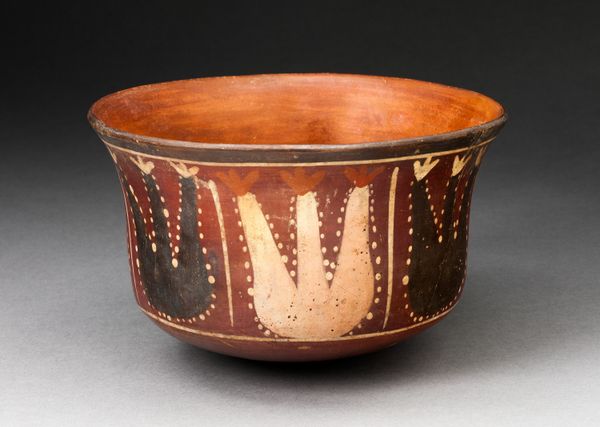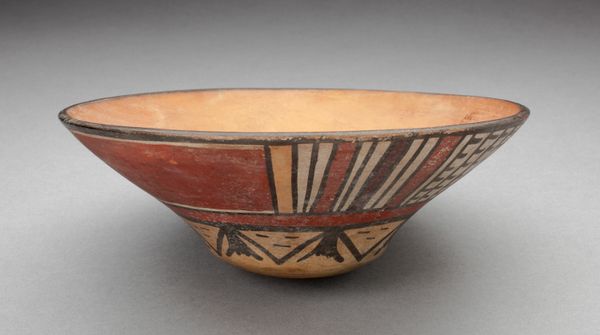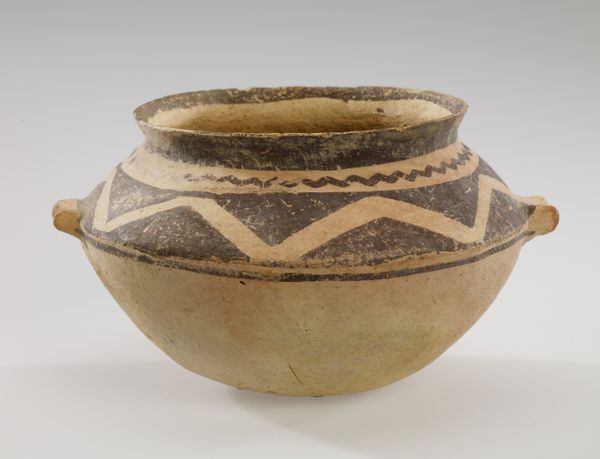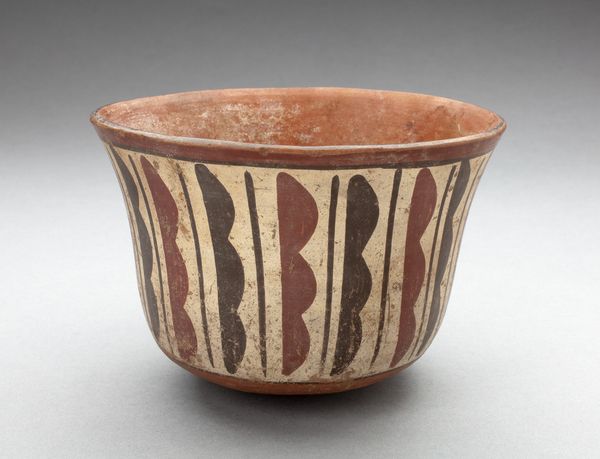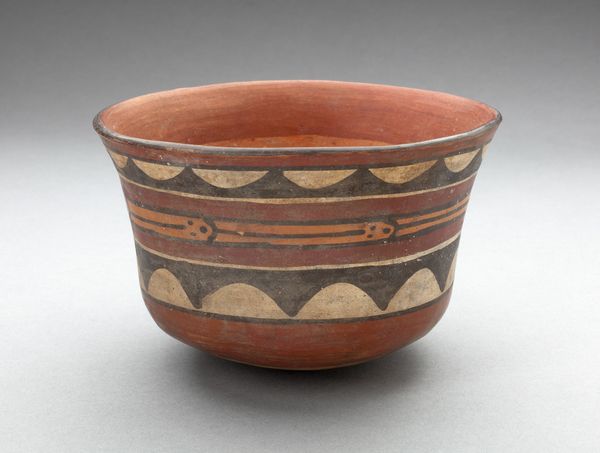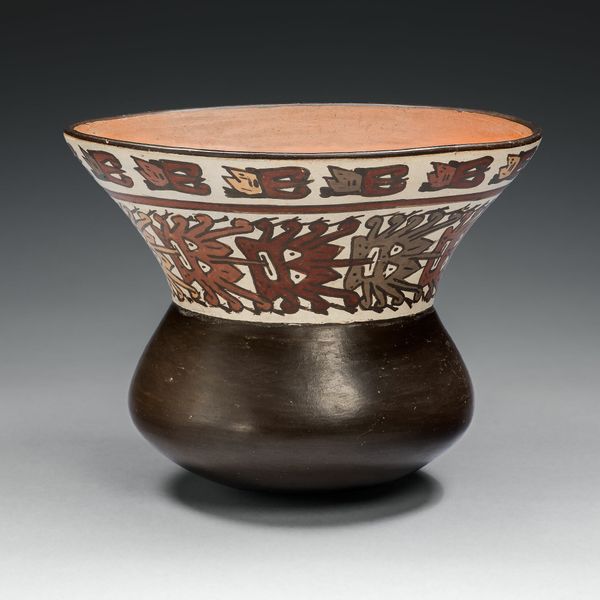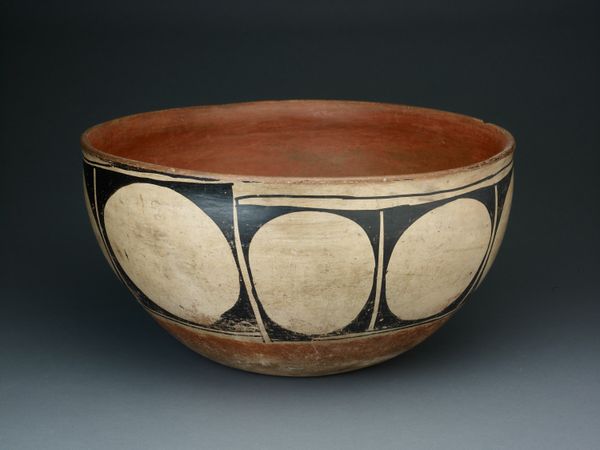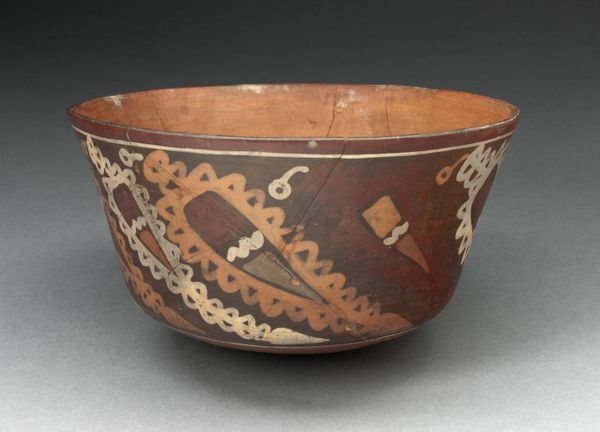
Flaring Bowl Depicting Repeated Motif Resembling Darts c. 180 - 500
0:00
0:00
ceramic
#
ceramic
#
geometric
#
ceramic
#
indigenous-americas
Dimensions: 10.2 × 14.9 cm (4 × 5 7/8 in.)
Copyright: Public Domain
Curator: This lovely object is a Nazca flaring bowl from around 180 to 500 AD, and it's currently housed here at the Art Institute. It's made of ceramic, and it features a repeated motif resembling darts. Editor: It's deceptively simple at first glance, isn't it? All those stripes rushing upward...it almost has a kinetic quality. Makes you think of movement, like rain, or maybe feathers fanning out. Curator: Yes, that rhythmic quality is very characteristic of Nazca pottery. These vessels were often used in ritual contexts, and the geometric patterns could be seen as symbolic representations of the natural world or perhaps even abstract concepts. The craftsmanship, considering the era and resources, is also notable. Editor: Absolutely. The firing process alone must have been complex. Thinking about the specific clays available, the preparation, the labor investment… each painted stroke seems weighted with meaning. I’m curious about the pigments; that red is striking against the white slip. Were those pigments locally sourced? What minerals were processed and by whom? Curator: Undoubtedly, local sourcing would have been essential. And the application, precise yet with an appealing spontaneity. What thoughts might have gone through the creator’s mind as they meticulously applied the bands of color and shapes? I imagine their life intertwined deeply with their craft. Editor: Indeed. To view it outside of its materiality feels almost disrespectful, like ignoring the very conditions of its making. Each piece reflects a wider system of labor, access, and technology that is as vital as its potential symbolism. Curator: Agreed, acknowledging that the bowl holds both functional history and imaginative inspiration certainly enhances how we view the final form today. Editor: It truly alters one’s sense of appreciation.
Comments
No comments
Be the first to comment and join the conversation on the ultimate creative platform.

